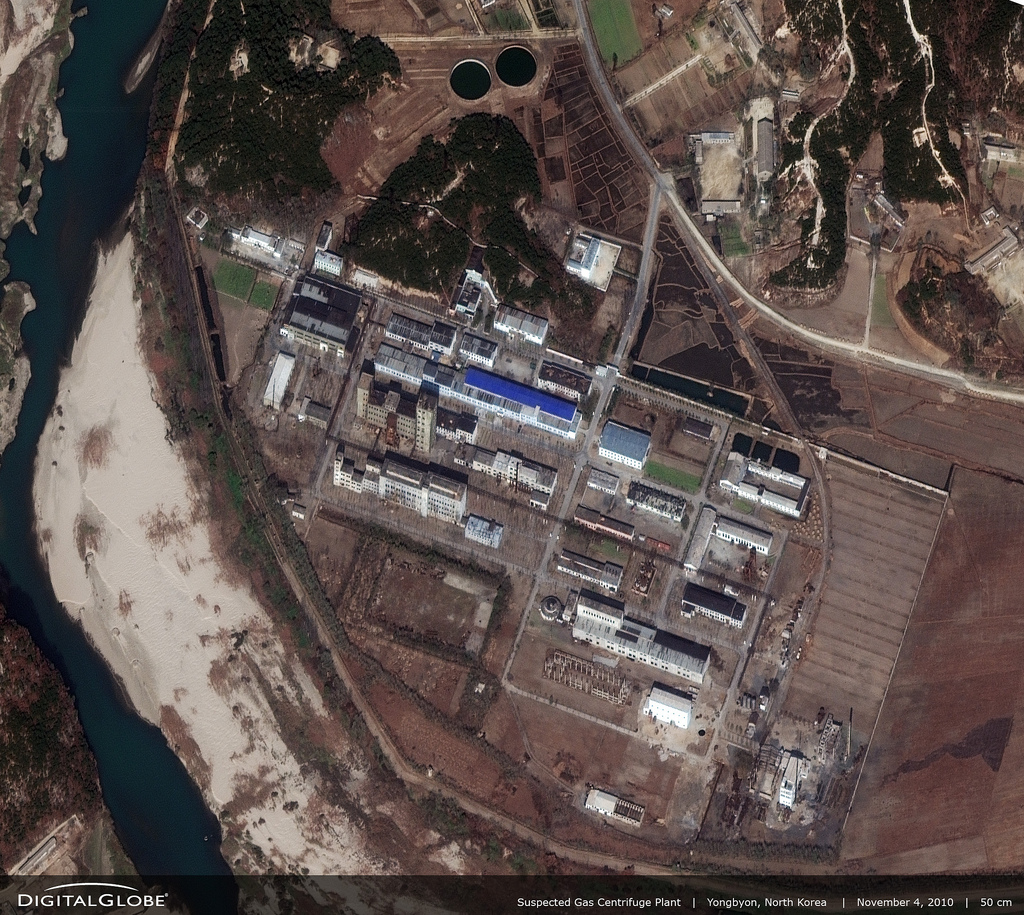The Peninsula
North Korea’s Light Water Reactor vs. the Asia-Pacific Clock

By Nicholas Hamisevicz
A new report with satellite images shows North Korea’s progress constructing a new light water reactor at Yongbyon. The North Koreans revealed the facility to Ambassador Jack Pritchard, KEI’s President, and in subsequent weeks, Dr. Siegfried Hecker of Stanford University in November 2010. Dr. Hecker in his trip report expressed his surprise at how quickly the North Koreans got the 2,000 centrifuges working along with the modernity of the control room, suggesting significant progress had already been made on uranium enrichment. The new report from the 38 North blog analyzes satellite imagery and provides a timeline of two to three years for the potential start of operations of the light water reactor. This short timeframe becomes even shorter when put up against the Asia-Pacific clock. The U.S. and its allies can quickly lose almost two years just based on next year’s election cycles and transitions. It could be all the time North Korea needs.
Knowing that 2012 would be a year stacked with elections and transitions, the impetus should have been on getting things done in 2011. However, North Korea’s provocations from the sinking of the Cheonan and shelling Yeonpyeong Island damaged the opportunities for progress. The U.S. and South Korea rightfully had to respond and attempt to address these actions in their discussions with North Korea. There have been bilateral meetings this year between the United States and North Korea and the two Koreas respectively to work through all of these concerns; however, both the United States and South Korea have sought more positive actions from North Korea, which seems to be trying to run out the clock on the current administrations. At the same time, the satellite images show North Korea has been upgrading their facility at Yongbyon.
The impetus for action from the United States and South Korea will continue to grow. With elections set for the National Assembly and presidency in South Korea combined with the presidential election in the United States in 2012, policy toward North Korea could be delayed due to election cycles and domestic politics, giving North Korea a year to work on its light water reactor. Additionally, the uncertainty of diplomatic engagement with North Korea could fuel political attacks from the opposition against the incumbents in South Korea and the United States. This electoral dynamic could limit diplomatic efforts to get North Korea back on a path toward denuclearization.
Depending on the speed of transition, it will take the new presidential leadership in South Korea some time to get organized and start implementing its own North Korean policy. This transition in North Korean policy would be exacerbated if President Obama is unable to win re-election and a new president takes office in the United States. North Korea could potentially gain at least another six months from these leadership transitions; all of the sudden, the two to three year time frame becomes a current reality.
The new images of the facility at Yongbyon highlight the need for the United States, South Korea, and other allies and partners to push for denuclearization and look for ways to change North Korea’s calculations about the need for nuclear weapons. Two years can quickly evaporate in an Asia-Pacific region featuring an already packed diplomatic calendar combined with a year of wide-ranging elections, leadership changes, and their subsequent transitions. North Korea will likely use this time to complete its light water reactor at Yongbyon. Facing this real prospect, the United States and South Korea must not neglect denuclearization efforts during this time as well.
Nicholas Hamisevicz is the Director of Research and Academic Affairs for the Korea Economic Institute. The views represented here are his own.
Photo by DigitalGlobe
